Climate Factors - Definition, Facts, Examples, Quiz, Trivia
Discover what makes Earth's climate and how it's changing
What is Climate?
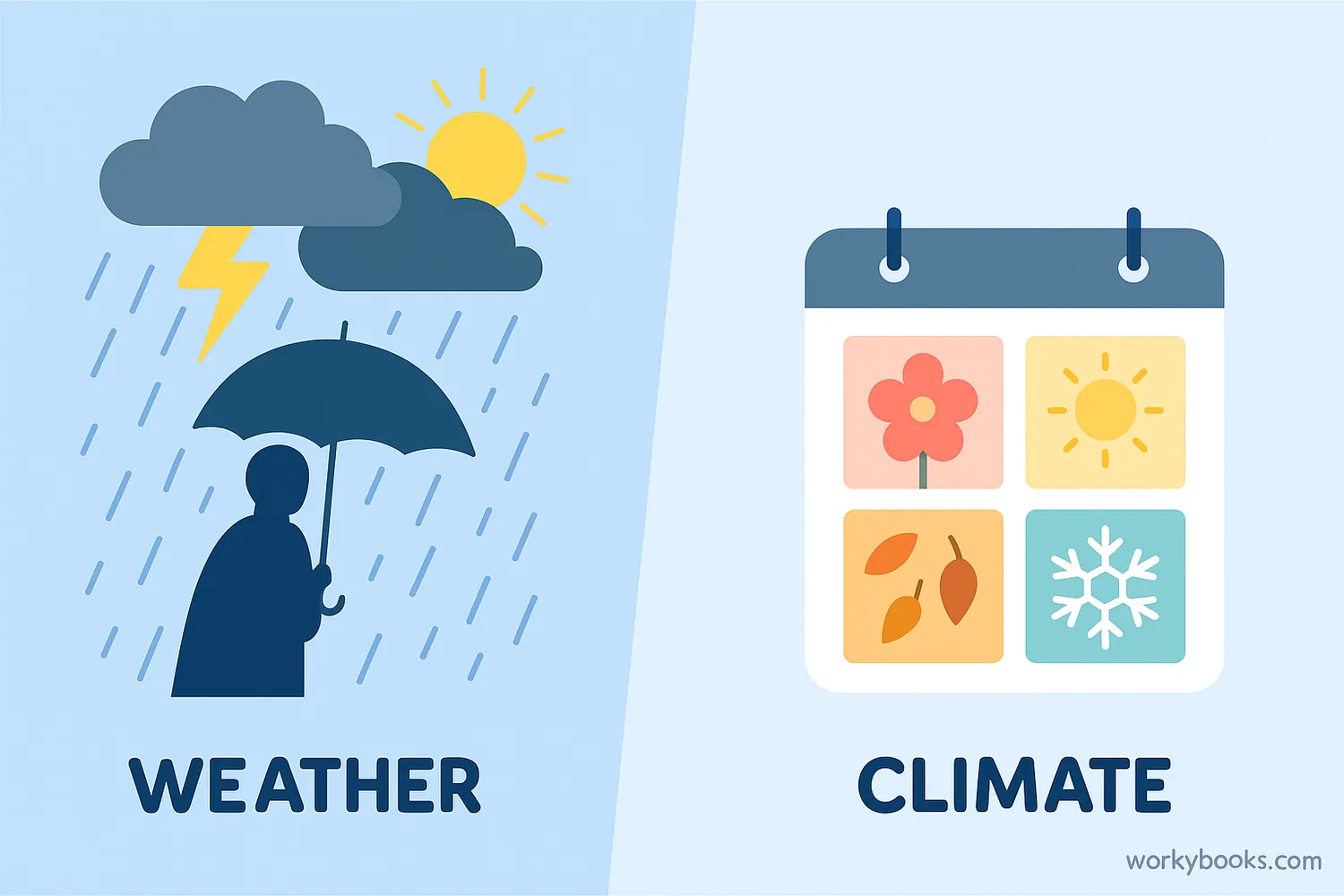
Climate is the average weather conditions in a place over a long period of time—usually 30 years or more. While weather can change in just a few hours, climate changes slowly over decades or centuries.
Think of it this way: Weather tells you what to wear today, while climate tells you what clothes to have in your closet for different seasons!
Science Fact!
Earth has many different climate zones, from the freezing polar regions to the hot tropics near the equator!
Natural Climate Factors
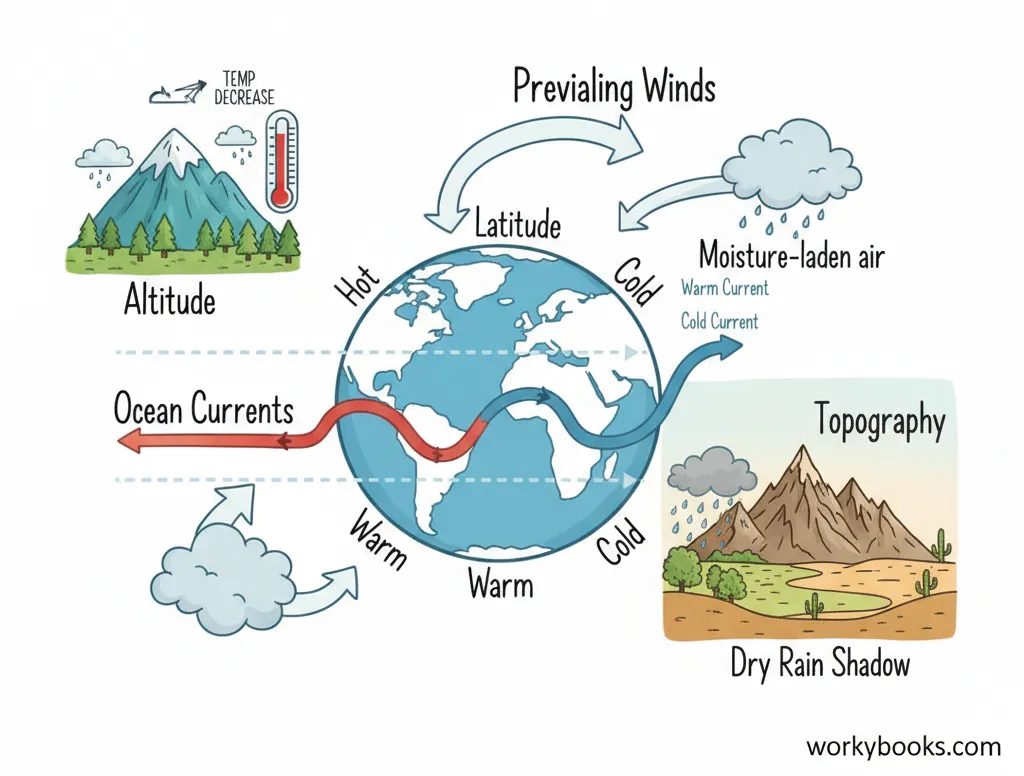
Earth's climate is influenced by many natural factors that have existed for millions of years. These factors work together to create the different climate zones around our planet:
Latitude
Distance from the equator affects temperature. Areas near the equator receive more direct sunlight and are warmer.
Impact: Creates tropical, temperate, and polar zones
Altitude
Higher elevations have cooler temperatures because the air is less dense and holds less heat.
Impact: Mountains have cooler climates than nearby lowlands
Ocean Currents
Moving ocean waters transfer heat around the planet, warming some regions and cooling others.
Impact: The Gulf Stream keeps Europe warmer than similar latitudes
Prevailing Winds
Global wind patterns move air masses and moisture around the planet, affecting rainfall and temperature.
Impact: Creates wet and dry regions based on wind direction
Topography
Mountains, valleys, and other landforms affect how air moves and where precipitation falls.
Impact: Rain shadows create deserts on the downwind side of mountains
Human Influences on Climate
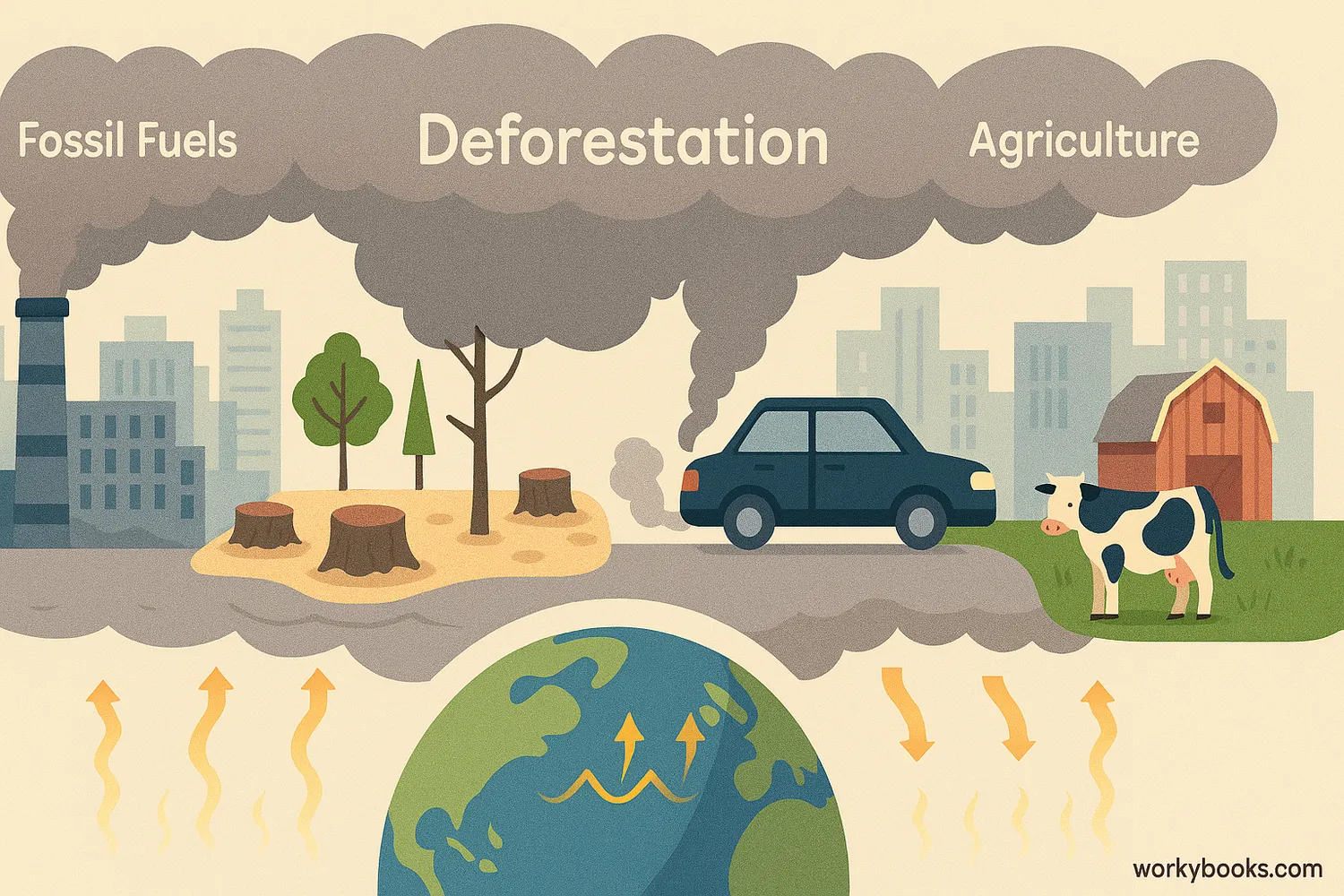
While natural factors have always influenced climate, human activities are now causing rapid changes to Earth's climate system. These activities release greenhouse gases that trap heat in the atmosphere:
Burning Fossil Fuels
Coal, oil, and gas release carbon dioxide when burned for energy
Transportation
Cars, trucks, ships, and planes burn fuel and release emissions
Deforestation
Cutting down forests reduces Earth's ability to absorb carbon dioxide
Agriculture
Farming practices release methane and other greenhouse gases
These human activities have increased the concentration of greenhouse gases in the atmosphere to levels not seen in at least 800,000 years, causing the Earth to warm at an unprecedented rate.
The Greenhouse Effect
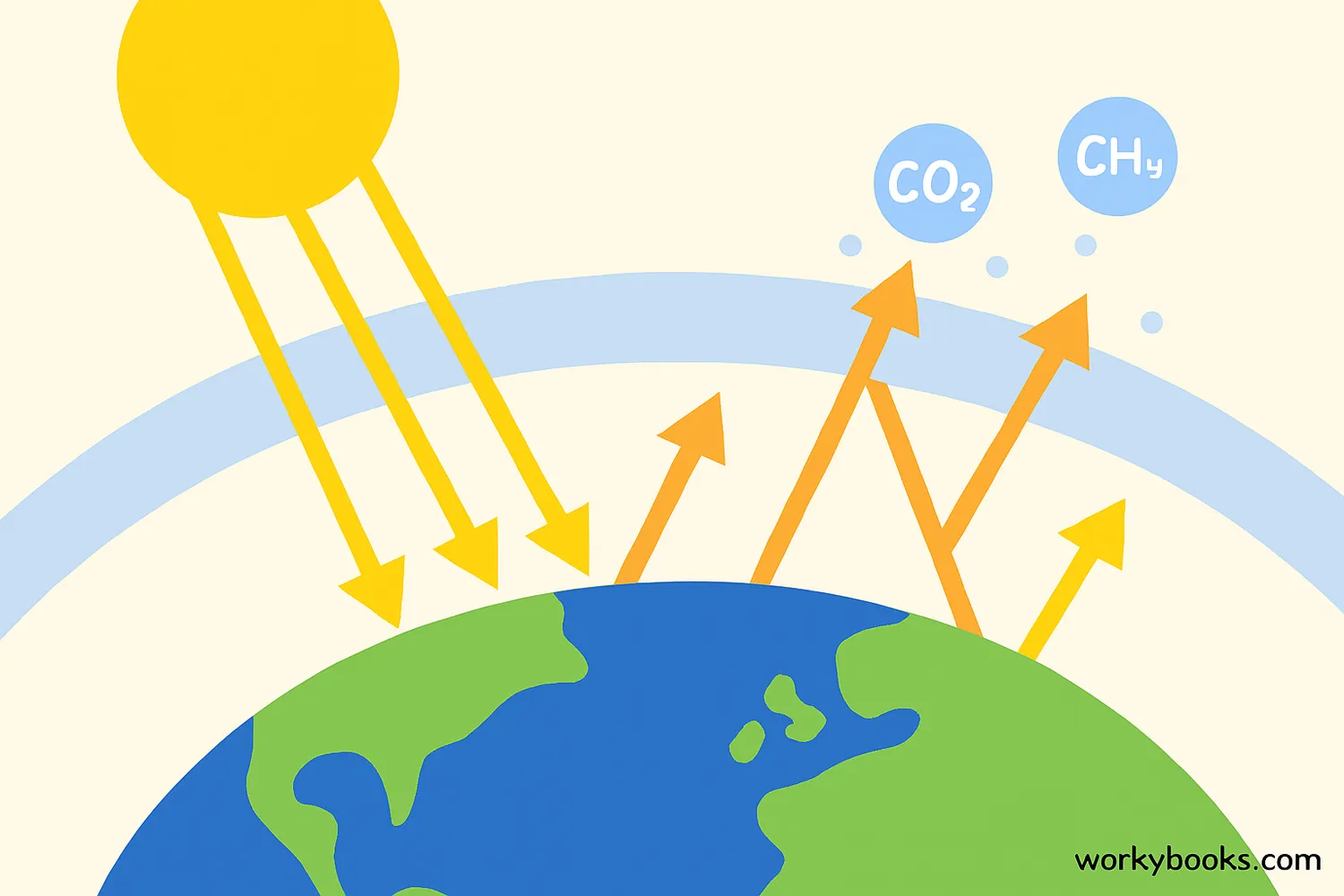
The greenhouse effect is a natural process that keeps our planet warm enough for life. Sunlight passes through the atmosphere and warms Earth's surface. Some of this heat is radiated back toward space, but greenhouse gases trap some of it, keeping our planet at a comfortable average temperature of about 15°C (59°F).
Without the natural greenhouse effect, Earth would be too cold for life as we know it—about -18°C (0°F)! However, human activities are adding extra greenhouse gases to the atmosphere, making this effect stronger and causing global warming.
Did You Know?
The main greenhouse gases are water vapor, carbon dioxide, methane, and nitrous oxide. Carbon dioxide stays in the atmosphere for hundreds to thousands of years!
Climate Change Impacts
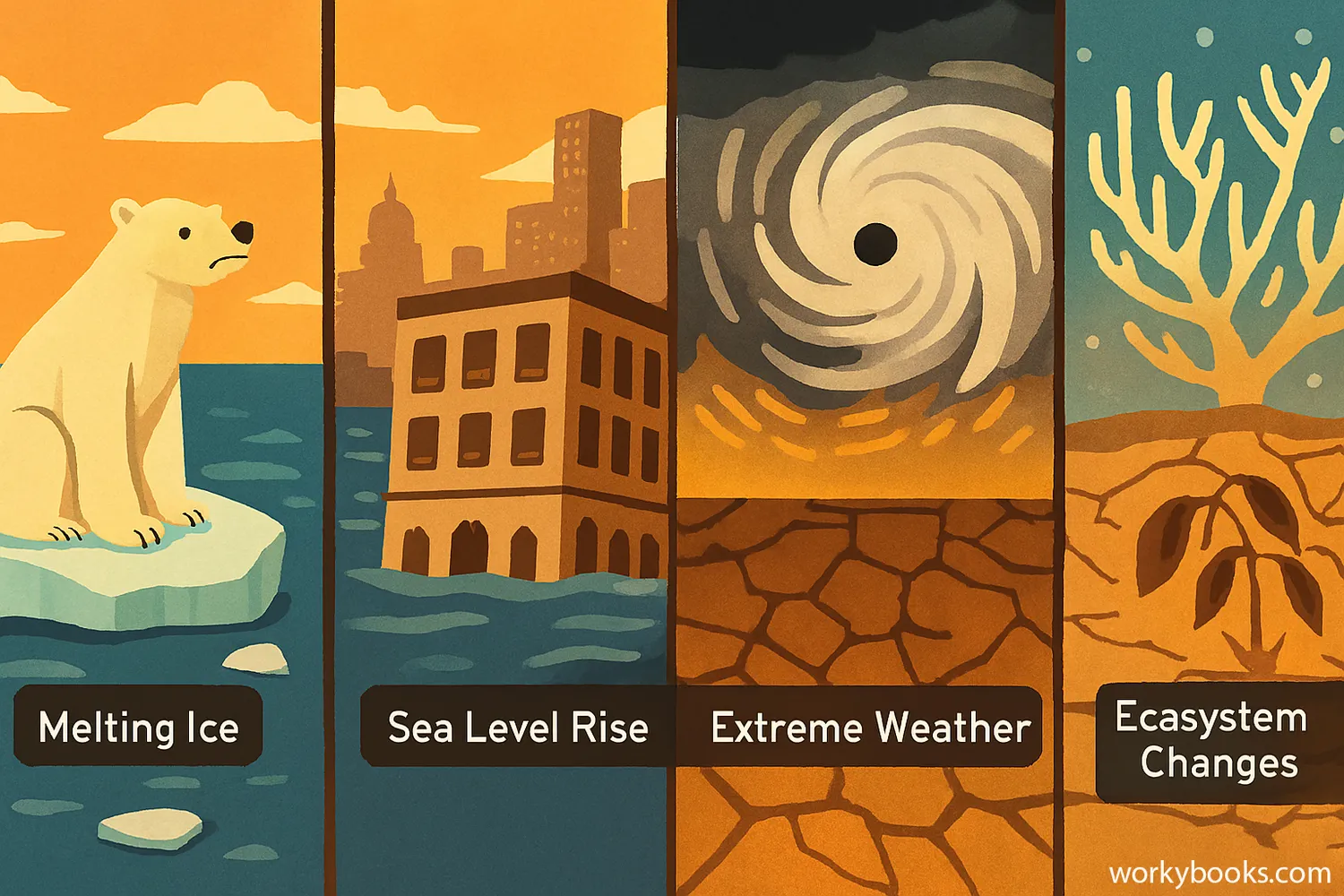
The changing climate is already affecting our planet in many ways. These impacts are expected to become more severe if warming continues:
Rising Temperatures
Global average temperature has increased by about 1°C (1.8°F) since the late 1800s.
Impact: More frequent and intense heatwaves
Sea Level Rise
Melting ice and expanding warm water are causing sea levels to rise.
Impact: Coastal flooding and erosion
Extreme Weather
Climate change is making some weather events more severe.
Impact: Stronger hurricanes, heavier rainfall, worse droughts
Ecosystem Changes
Plants and animals are struggling to adapt to rapid changes.
Impact: Coral bleaching, shifting habitats, species extinction
Climate Solutions
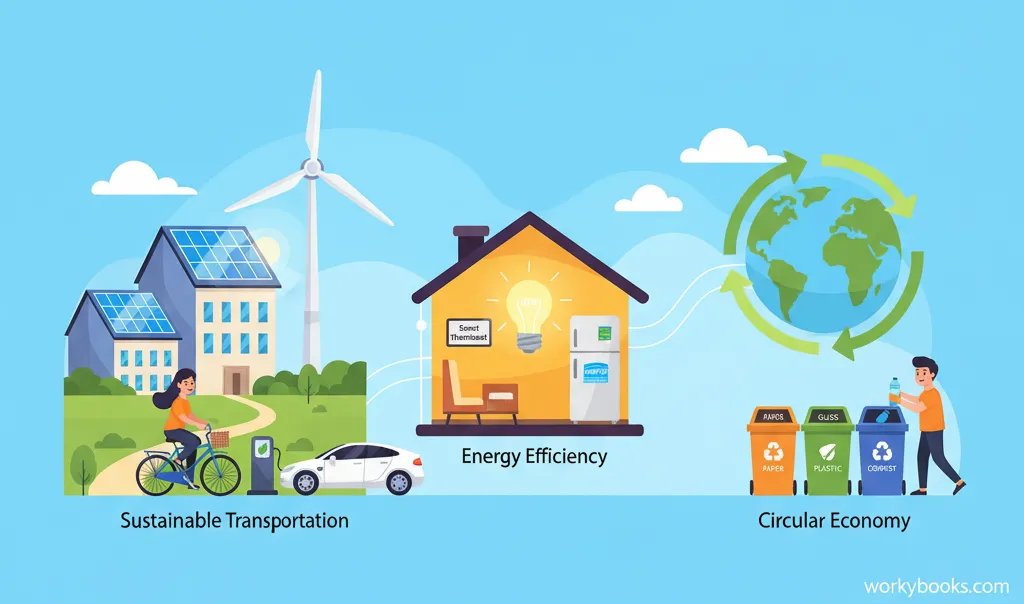
The good news is that we have many solutions to address climate change! By working together—governments, businesses, communities, and individuals—we can reduce greenhouse gas emissions and build a more sustainable future:
Clean Energy
Switching to solar, wind, and other renewable energy sources
Energy Efficiency
Using less energy through efficient appliances and buildings
Sustainable Transportation
Walking, biking, public transit, and electric vehicles
Circular Economy
Reducing waste and reusing materials
Individual actions matter too! Things like eating less meat, reducing food waste, using energy wisely, and talking about climate change with others can all make a difference when millions of people do them.
Positive Development!
The cost of renewable energy has dropped dramatically, making solar and wind power cheaper than fossil fuels in many places!
Climate Factors Quiz
Test your climate knowledge with this quiz! Answer all 5 questions to see how much you've learned.
Frequently Asked Questions
Here are answers to some common questions about climate factors:
Science Trivia
Discover some amazing facts about climate and our planet!
Carbon Concentration
The amount of carbon dioxide in the atmosphere is higher now than at any time in at least 800,000 years. Before the Industrial Revolution, it was about 280 parts per million. Today, it's over 420 parts per million!
Melting Ice
Greenland is losing ice six times faster than it was in the 1980s. If all the ice in Greenland melted, global sea levels would rise by about 7 meters (23 feet)!
Ocean Absorption
The oceans have absorbed about 30% of the carbon dioxide released by human activities. This makes the water more acidic, which harms marine life like corals and shellfish.
Temperature Records
The last decade (2011-2020) was the warmest on record, with each of the last four decades being warmer than any previous decade since 1850!





